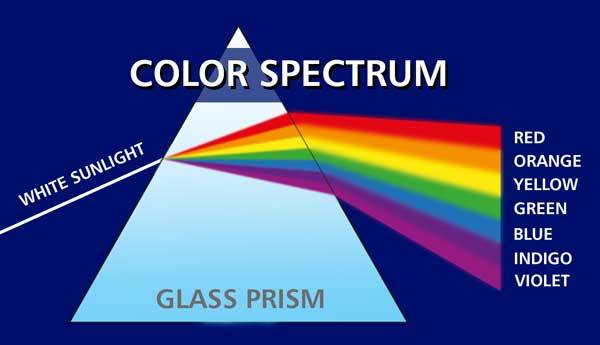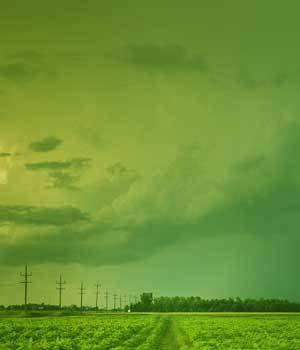Why The Sky Appears Blue – The Different Colors Of Our Sky Explained

Whenever you look at the sky on a clear, sunny day, you will most probably see that it is some variation of blue. This is due to a natural phenomenon that occurs as sunlight travels through the atmosphere.
The sky primarily appears blue due to a process called Raleigh Scattering. Blue light has the shortest wavelength of all visible colors, causing the particles they pass through to oscillate more. This results in the light being scattered more widely, making it the most visible color in the sky.
Depending on your location, what season it is, and the time of day, the sky will have a different color or tint each time you look at it. From turning darker or lighter to changing into a completely different color, the atmosphere rarely stays the same.
Fortunately, there is a logical and scientific explanation for our changing sky. In this article, we look at some of the most common and well-known colors on display in the atmosphere and why it happens.
Before looking at the individual colors, we need to look at the overall reason why the sky changes color in the first place.
Why Do The Sky Change Colors?
The sky changes color due to the scattering of light (Commonly referred to as Rayleigh scattering by scientists.) Small molecules of oxygen and nitrogen are responsible for this scattering of light.
The specific color we see is determined by the wavelength of the color, as well as the amount of atmosphere (distance) the light has to travel through.
Different colors have different wavelengths. The longer the distance they have to travel through the atmosphere, the more molecules they encounter, causing more scattering. Colors with longer wavelengths can travel further than those with short wavelengths.
Using The Color Spectrum To Understand The Colors Of The Sky
The white light you see emitted by the sun is not a single color but actually a combination of primary colors. There are seven primary colors, namely red, orange, yellow, green, blue, indigo (purple), and violet (also abbreviated and known as ROYGBIV).

Each color has millions of tints, but when combined, they create white light. The diagram shown above will give you a better understanding of how white light gets split up.
Explaining The Different Colors Of The Sky
Now that the cause for the different colors in the sky has been determined, we can examine the specific colors and why they occur.
A quick note on Rayleigh scattering we briefly mentioned earlier. It is named after physicist Lord Rayleigh, who correctly concluded that the scattering of light takes place by particles much smaller than a color's wavelength, namely molecules mostly found in gases.
Generally, the atoms of oxygen and nitrogen are enough to scatter light into its various colors. The older theory that particles of dust and water moisture were the main causes of color scattering had mainly been disproved. They still play a role, though, just a lesser one.
With that said, it will becomes clear as we discuss the different colors, how dust particles and moisture contribute to the way in which many of them are formed.
The most appropriate way in which to start examining the different colors of the sky is to get straight to the question asked more often than any other color-related question by children, students, and specifically in Google. One you probably asked yourself at some point...
Why The Sky Appears Blue
You normally see a blue sky on a clear day when the sun is shining and already above the horizon. Blue is seen more often than any other color during the day.

As the light of the sun travels through the atmosphere, it causes the molecules and small particles they pass through to oscillate (move up and down or back in forth). The oscillation, in turn, causes the colors in the spectrum to be scattered in all directions.
Colors with shorter wavelengths cause the particles to oscillate faster than those with longer wavelengths. When a particle oscillates faster, more of the scattered color is produced, making it more visible than other colors.
Blue light has a very short wavelength, and as a result, is scattered more than others. It is this high frequency of scattering that makes blue much more visible than any other color on a clear sunny day.
Violet light gets scattered even more than blue light, but since there is a smaller amount of it present in visible light than blue, and because our eyes are much more sensitive to blue than violet color, we only see the blue tint.
Why The Sky Appears Red
The sky normally turns red during a sunset, and to a lesser extent, sunrise. At this time, the sun is either touching or just beneath the horizon.

Due to the position of the sun, the light has to travel much further through the atmosphere to reach your location. As always, violet and blue light are scattered the most, lighting up the sky below them. However, you are now much further away from the sun and scattered light.
With many more molecules in the air to travel through, the blue light gets scattered and rescattered and fades long before it reaches you. Red light, which has a longer wavelength, travels unaffected through the particles to reach you, making it possible to view.
If the sky is polluted, more particles are present in the atmosphere, which means even more shortwave colors are blocked, resulting in the sky appearing even redder. Ironically, it is the pollution particles in the air that causes some of the most spectacular sunsets.
Why The Sky Turns Pink
It may sound like a strange and rare color for the sky to display, but a pink sky is actually quite common in large cities, especially those experiencing high levels of pollution.

During a high-pressure system, when plenty of particles from the pollution adds to the molecules in the air, an effective filter for the scattering of violet light is created.
Although blue light is more visible than violet light under normal circumstances, these unique atmospheric circumstances cause more violet to be scattered more than blue light, resulting in a pink (violet) sky.
A sunset's color can appear pink under similar conditions that create a red sky. Under some circumstances, red light reaching you, combined with red light reflected off particles high in the air, and some scattered blue light making it through, creates a beautiful violet sunset.
Why The Sky Appears Grey
It is a well-known fact that the sky looks grey when it is overcast and completely covered with clouds. The appearance of the grey color has a relatively simple explanation.

Clouds are predominantly filled with small water droplets. Unlike the molecules and particles that scatter light according to their wavelengths on a clear day, water droplets refract light equally. As a result, the light passing through the clouds remains white.
The only reason we view the light as grey is because the clouds block some of the light from passing through, making it appear grey. The different shades of grey you observe in clouds are a result of their density, which determines the amount of light they allow through.
If you want to know more about the different types of clouds and the amount of coverage each provides, you can read more about cloud formations in this article.
Why The Sky Appears Green
There are quite a few speculations and beliefs circulation around green skies. One of the popular ones is the belief that green skies precede a tornado. (You can read more about this belief and folklore regarding red skies in this article.)

There is no clear consensus or any facts that can explain why the sky sometimes appears green. There are a couple of theories among scientists. The most plausible one involves a combination of the scattering of light combined with the presence of a storm system.
We know why blue light occurs. Since most storms appear later in the afternoon, the sun will already be close to the horizon, emitting a yellow color. The combination of the blue and yellow light results in the green sky you see contrasted against the dark edges of a storm.
This is just one theory, but it seems to be one of the most popular and more believable ones. Just keep in mind that no theory has been scientifically proven yet.
Conclusion
In this article, we covered the colors in the sky most often observed. The sky can and does produce many more colors, but most of them have a similar explanation to the ones described in this article.
You will now have a much better understanding of when and why these colors appear in the sky, as well as the processes involved in creating them.
Never miss out again when another interesting and helpful article is released and stay updated, while also receiving helpful tips & information by simply clicking on this link .
Until next time, keep your eye on the weather!
